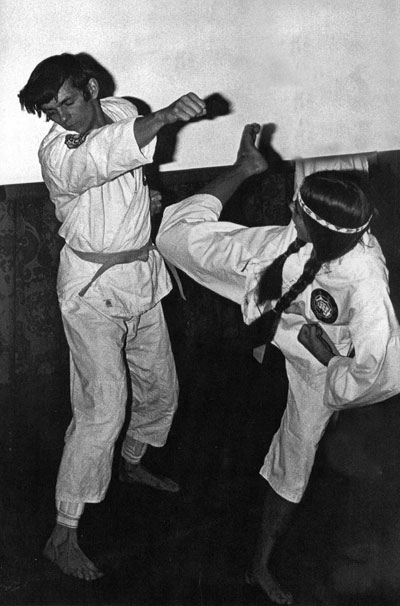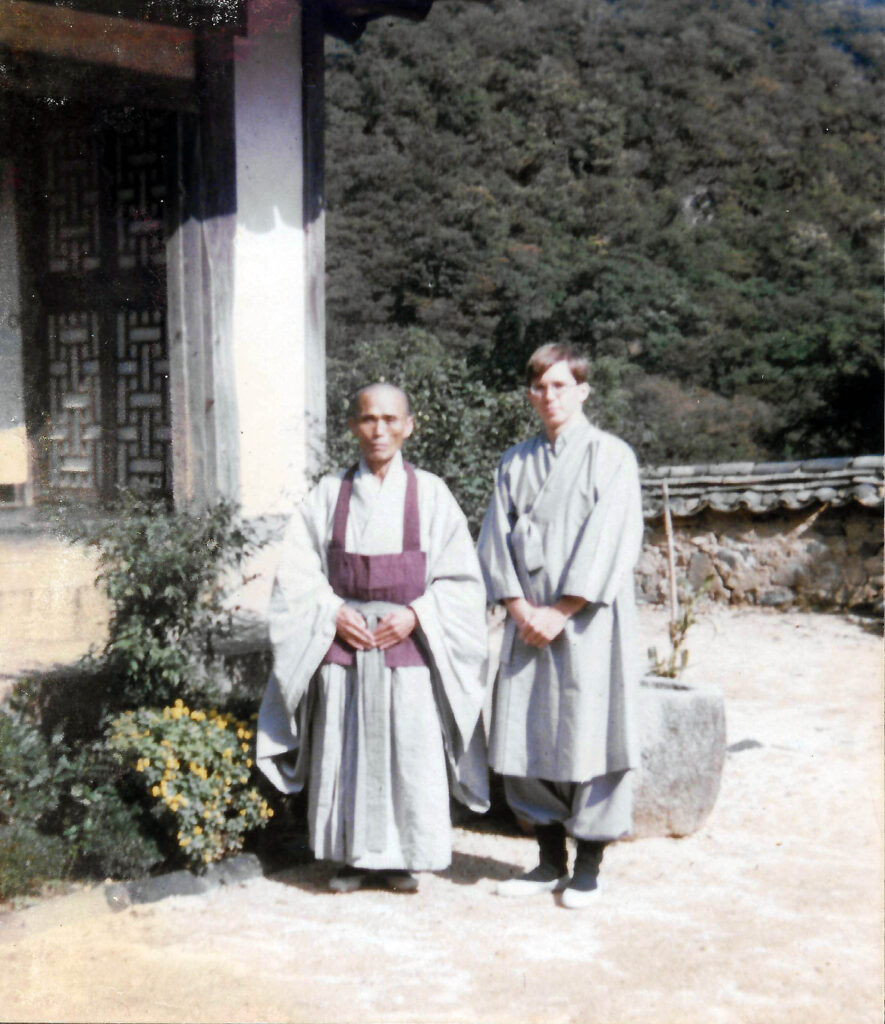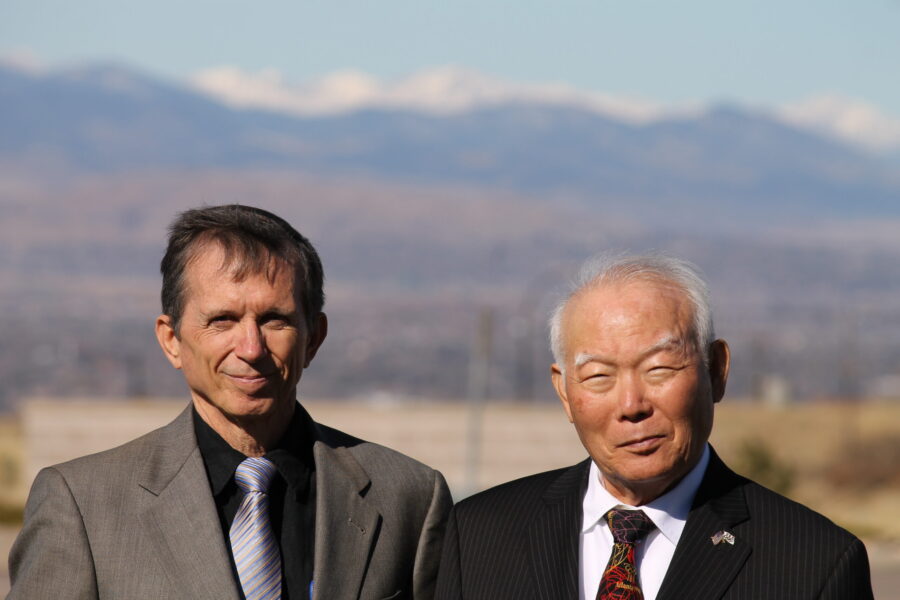A Martial Artist’s Spirit Journey
Fifty-some years ago, I encountered Taekwondo. Little did I know that it would propel me on a life long journey that grows more amazing with each passing day.
As a freshman majoring in astronomy at the University of Michigan, I was fascinated by black holes, massive stars that undergo complete gravitational collapse so unimaginable that nothing, not even light, could escape from their intense gravity. I was struggling to wrap my head around differential equations, and it was not going well. It would not be my first failure in life, nor my last.

Failure in astronomy stared me in the face. My mind was full of questions about the nature of the universe, and yet neither astronomy nor I could offer solutions. So I looked elsewhere, studying philosophy, anthropology, economics, and so on, still finding no satisfaction.
Unity of Theory and Action
That was when fate stepped in. To graduate, undergraduates needed two semesters of physical education. I chose Taekwondo. Back then, no one knew what it was, so we explained to friends that we were learning ‘Korean Karate’. To get the most of it, I joined the U-Michigan Taekwondo Club, a fateful decision that would transform my life.
Our head instructor, the 29-year old economist Mr. Chong (as we called him in those days), taught us to see both micro-views and macro-views of the world around us. While other Taekwondo instructors taught fighting tactics only, he taught both tactics and strategy, training his students first to be like foot soldiers, then like officers, and ultimately to think and act like generals.

I was already pondering Unified Field Theory, a term coined by Albert Einstein, who attempted to unify the general theory of relativity with quantum mechanics. Master Chong carried it further and spoke rather of the Unity of Theory and Action. That is, blind action without theoretical understanding is bound to fail, and theoretical understanding alone is mere talk. Success arises when theory and action complement each other.
The Power of Failure
Master Chong taught us to convert our weaknesses into strengths, either through hard training or else by re-imagining and seeing the issue in a whole new light. Every ‘failure’ is also an opportunity for one to reflect, learn, and evolve to the next level of understanding.
Grandmaster Chong’s personal example had a far-reaching formative influence upon me. Fascinated and inspired by what he called the spirit of Taekwondo, I soon set out on a spirit quest to Asia that continues to this day.

In 1970, I chose not to do my junior year of study abroad in Germany, but instead designed a plan to circle the globe in pursuit of the spirit of Taekwondo in its many manifestations. With a one-way ticket to Korea, and after a short stay in Seoul, I entered Beomeo-sa, a Zen monastery on a mountain outside Pusan, and lived as a monk for the rest of my two month stay in Korea.
Wormholes and Finnegans Wake
Ultimately, I decided to become a Buddhist monk in Sri Lanka in 1971. That was where I met the German Swami Gauribala, a remarkable man who had left Germany in 1936 and never returned, to become first a Buddhist monk, then a Hindu monk, and finally a simple hermit, a ‘nobody’. A citizen of Shambhala and a true cosmopolitan, he described his life as a quest for the Holy Grail.
German Swami became, after Master Chong, my teacher and role model. For fourteen years, until his passing in 1984, I lived and breathed to learn from him what I could. His final challenge to me was to study and understand the virtually unreadable 1939 novel by James Joyce, Finnegans Wake, written as a dream monologue retelling the history of the world. I still study it daily.
Transitions from Taekwondo to Aikido to Waltz
After returning to Michigan to complete my undergraduate degree in religious studies, Master Chong promoted me to first dan in 1976, not because of any exceptional ability on my part, but out of my sheer dedication to the art and to the masters of the art, Master Chong and his students, starting with Master Joseph Lloyd. Influenced by yoga and the teachings of German Swami Gauribala however, I had already begun to migrate to a nonviolent and non-competitive martial art, Aikido.
In 1976 shortly after being awarded my first Dan, I returned to South Asia. Based in Karachi, I served for five months as guest instructor of the Pakistan Kang Duk Won Tae Kwon Do Federation. After organizing one of Pakistan’s early national tournaments in December 1976, I retired from Taekwondo to resume my studies across much of South Asia.
While I was working in Frankfurt, Germany, I was able to resume Aikido training. When I returned to Ann Arbor in the mid-1980’s, I studied Yoshinkan Aikido for four years under Takashi Kushida Sensei, a worthy counterpart to Grandmaster Hwa Chong. Then, for twenty years from 1989 until 2009, I resided in Sri Lanka and India, trying to live the way the German Swami had lived, until I returned to America to settle in Florida where I live to this day.
“Master Patrick, how old are you?”
“Seventy, sir!”
“No, you are wrong! Think how old your DNA is. Your DNA has survived for millions of years. That means that you are millions of years old!”
-Hwa Chong
Master Chong taught us that Taekwondo is to be used in service of justice only. It follows, he says, that the true martial artist must also be a cosmopolitan, a person of broad vision who always cultivates a warm heart and a cool head. She or he is one who can see and serve justice: in the home, in the business world, in the dojang, and wherever needed.

At seventy, I now live in Gainesville, Florida, a campus town like Ann Arbor where I can dance and/or train seven days a week. My training with the Gainesville Old-time Dance Society (GODS) consists of contra dancing, waltz, and country dance traditions of England, Ireland, Scotland, Israel, and—not least of all—Dances of Universal Peace—while still training twice weekly at Aikido of Gainesville. Since 2014 I also serve the cause of justice for the Yezidis of Iraq and other persecuted minorities globally.
All this ever since 1969, I owe to Kang Duk Won Grandmaster Hwa Chong, Taekwondo teacher extraordinaire, economist, and cosmopolitan philosopher from a time when he and I were still young men.
What I have learned from Taekwondo: Nothing is impossible and ‘The best is yet to come!’
Patrick Harrigan, long time student and friend of Hwa Chong, the Kwan Chang Nim of KangDukWon Taekwondo, is Vice President for Public Affairs of the World Kang Duk Won Federation and the Secretary of the Confederation of Indigenous Nations of North Africa and the Middle East. A student of comparative religion, photographer, and author, since 1972 he has studied the role of sacred geography in South Asian mythology, especially traditions concerning Kataragama, the multi-religious shrine of the pan-Indian war god Skanda a.k.a. Murugan in Sri Lanka.
Note: This article first appeared in the Winter 2017 issue of Taekwondo Life magazine and is reproduced with the publisher’s kind permission.
